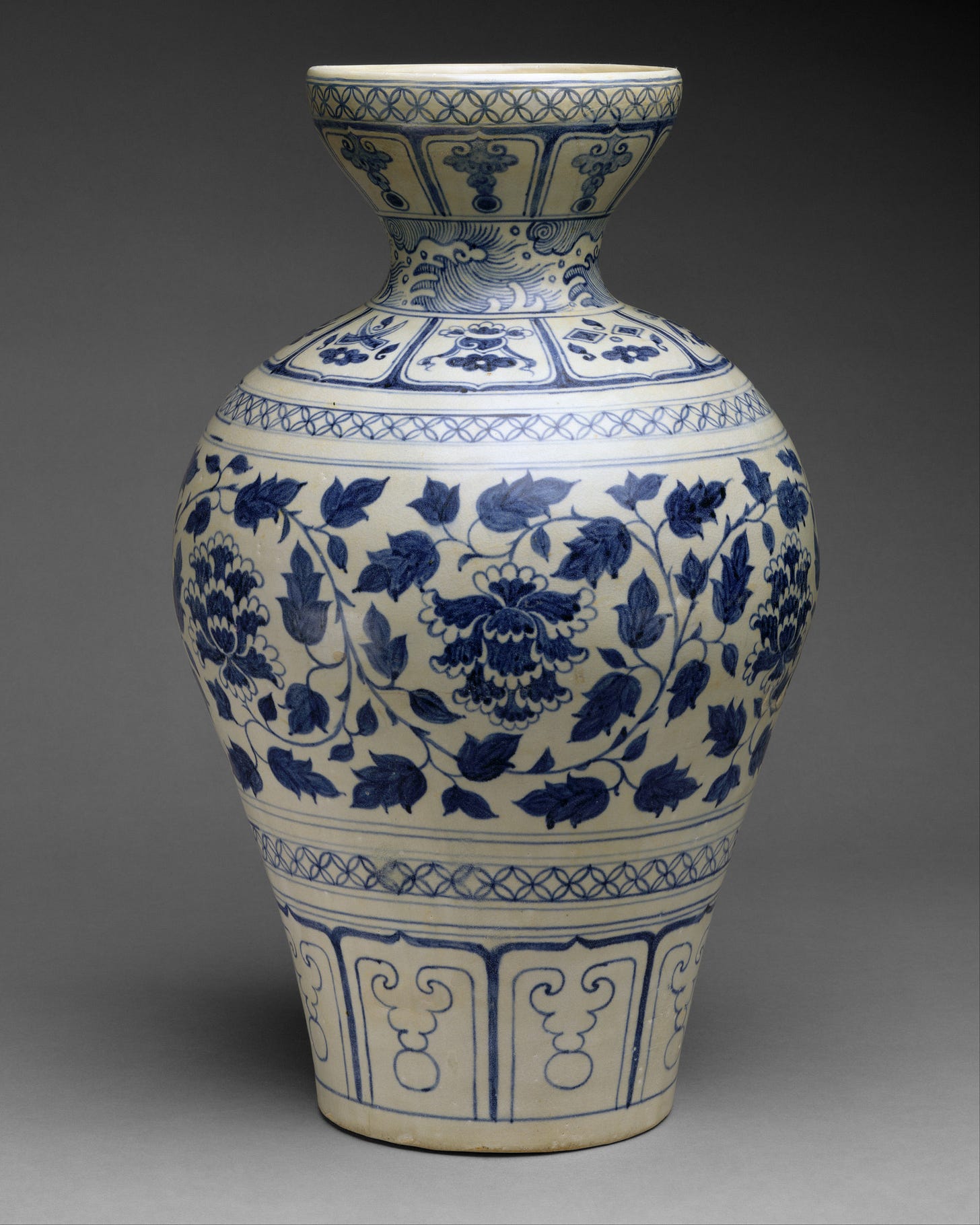Boosting Your Imaginative Skills Will Improve Your Wellbeing
Stress reduction. More joy. Improved problem solving.
Jump into your imagination as you admire this 14th century vase, called a meiping - for displaying plum blossoms. If you were a designer, how would you use this vase as inspiration to create a new product? Wallpaper? A stencil design? Fabric? There’s no right or wrong, just a moment to imagine.
Engaging and enhancing our imagination, as with any wellness trait, takes practice. Wellness doesn’t just happen. It takes attention, practice, and pushing ourselves to create new habits.
The Global Wellness Institute defines wellness as, “The active pursuit of activities, choices and lifestyles that lead to a state of holistic health.” This includes physical, mental, social, spiritual, environmental, and emotional aspects. And, to reiterate, we need to continually nudge ourselves to discover, boost, and improve our wellness.
Engaging your imagination provides multiple ways to improve your wellness.
Stress Reduction
Imagining peaceful scenes or positive outcomes can activate the brain’s relaxation response, helping to lower anxiety and reduce stress levels.Problem Solving & Resilience
Imagination allows us to mentally rehearse different scenarios, which builds coping strategies and strengthens our ability to bounce back from challenges.Increased Empathy
By imagining other people’s experiences, we expand our emotional understanding and build deeper connections with those around us.Boosted Creativity and Joy
Creative imagining—whether through daydreaming, storytelling, or art-making—stimulates joy and curiosity, both of which are linked to improved mood and overall wellbeing.A Sense of Possibility
Imagination opens the door to envisioning a different future, new goals, and personal growth, all of which can foster hope and motivation during tough times.
Our imagination can be triggered in everyday situations. We might wonder about the car in front of us with the Idaho license plate. We might imagine why they’re here. Who they’re visiting. Or how long their drive took.
We might be walking in the park and nudge our imagination as we look at the bench under the tree. Imagine who has sat on the bench. Imagine who made the bench. Or imagine what someone was wearing who sat on that bench 50 years ago.
Or we might be driving through a new city, a place we know nothing about, and when admiring a building with unusual architecture, we might imagine who works in the building. Or imagine who the architect was and what their goal was in creating this architectural marvel.
Or we might use our imagination as we play with our kids or grandkids, pretending to be characters in a favorite book. Or imaging riding our bikes across the country, as we ride around the block!
We can even use our imagination when someone makes us mad. If the checkout person at the grocery store is rude or unhelpful, we might imagine what’s going on in their life to cause them to be in a bad spot emotionally.
And, of course, museums, historic sites, and cultural settings are rich environments to spark our imagination. They can nudge us in multiple ways.
Transport Us to Other Times and Places
Standing in front of ancient artifacts or historic buildings invites us to imagine lives from different eras, offering a mental escape that reduces stress and sparks curiosity.Stimulate Creative Thought
Artworks and exhibits often pose open-ended questions or evoke emotional reactions, encouraging imaginative thinking that boosts our creativity and provides a needed mental recharge.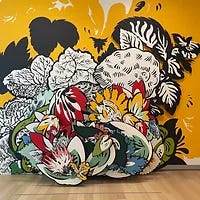


Encourage Empathy Through Storytelling
Cultural institutions of all kinds tell human stories—through portraits, diaries, or immersive environments—which engage our imaginations and help us see the world through others’ eyes, enhancing empathy and social awareness.Foster a Sense of Possibility and Inspiration
Exhibits about innovation, resilience, or beauty can inspire each of us to envision new paths or personal goals, especially when imagination is activated by hands-on or interactive experiences.Create Safe Spaces for Reflection
Quiet galleries, historic gardens, or thought-provoking installations provide space to explore their inner world, allowing imagination to process emotions, reflect on life, and support personal growth.
Before you close this essay, practice your imaginative skills a bit more. Pick one of these images and spend one minute imaging. Imagine the person that might have created the piece. Or how it was used. Or who owned it. Or how a designer might use it as inspiration for a new product. Or what about it allowed it survive through time.
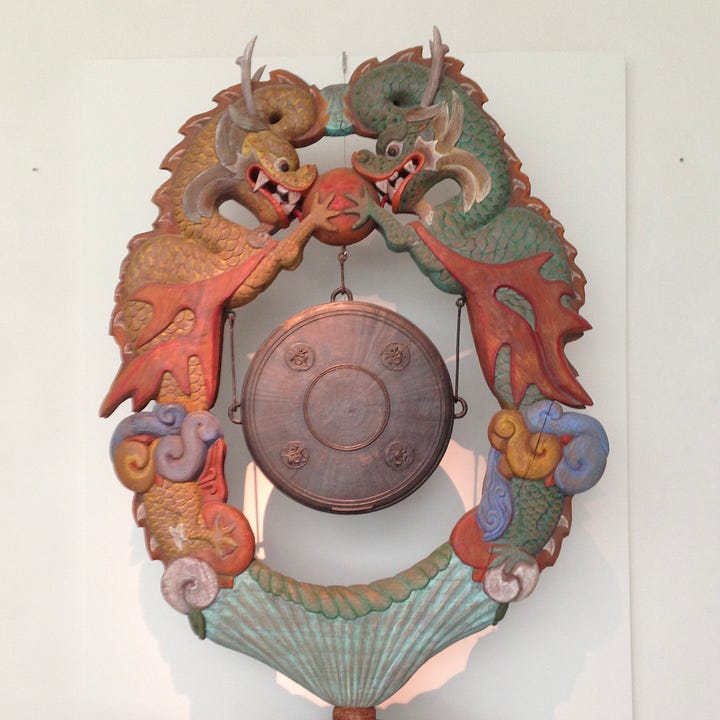
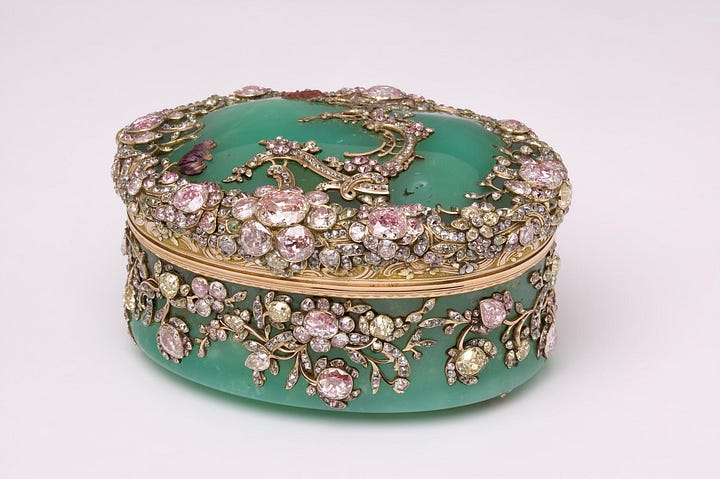

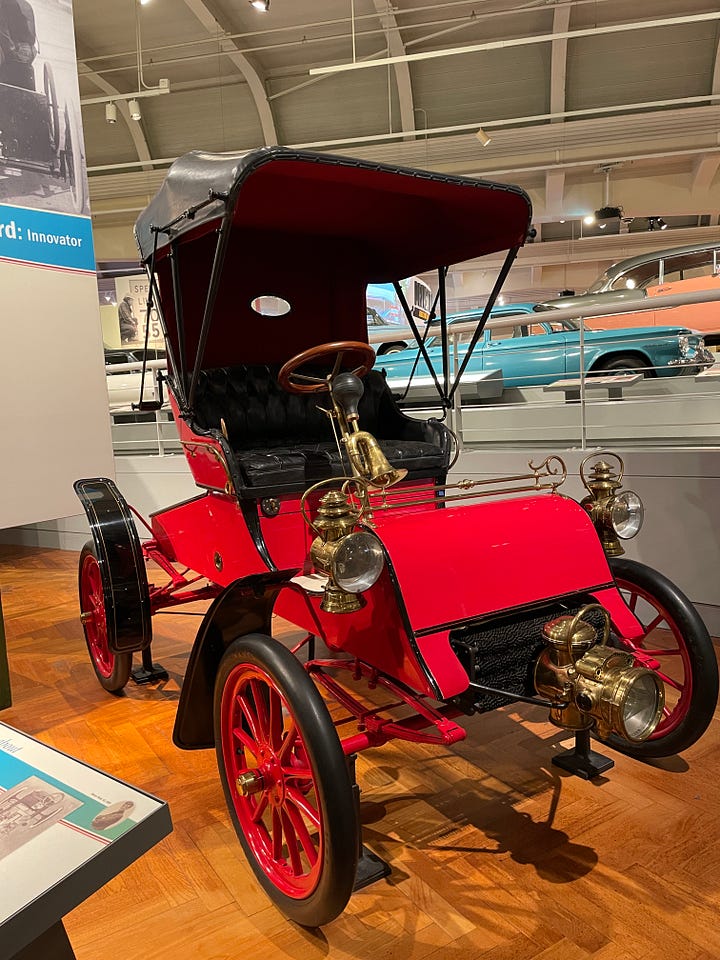
I’m not providing the details on these artworks because the goal isn’t to guess correctly, but to imagine! May your imagination be vivid, creative, and fun today! It will boost your wellbeing!
To inspire someone else to work on their imaginative skills and improve their wellbeing, please share a comment. Thanks!
Need more quick and easy ways to de-stress?




